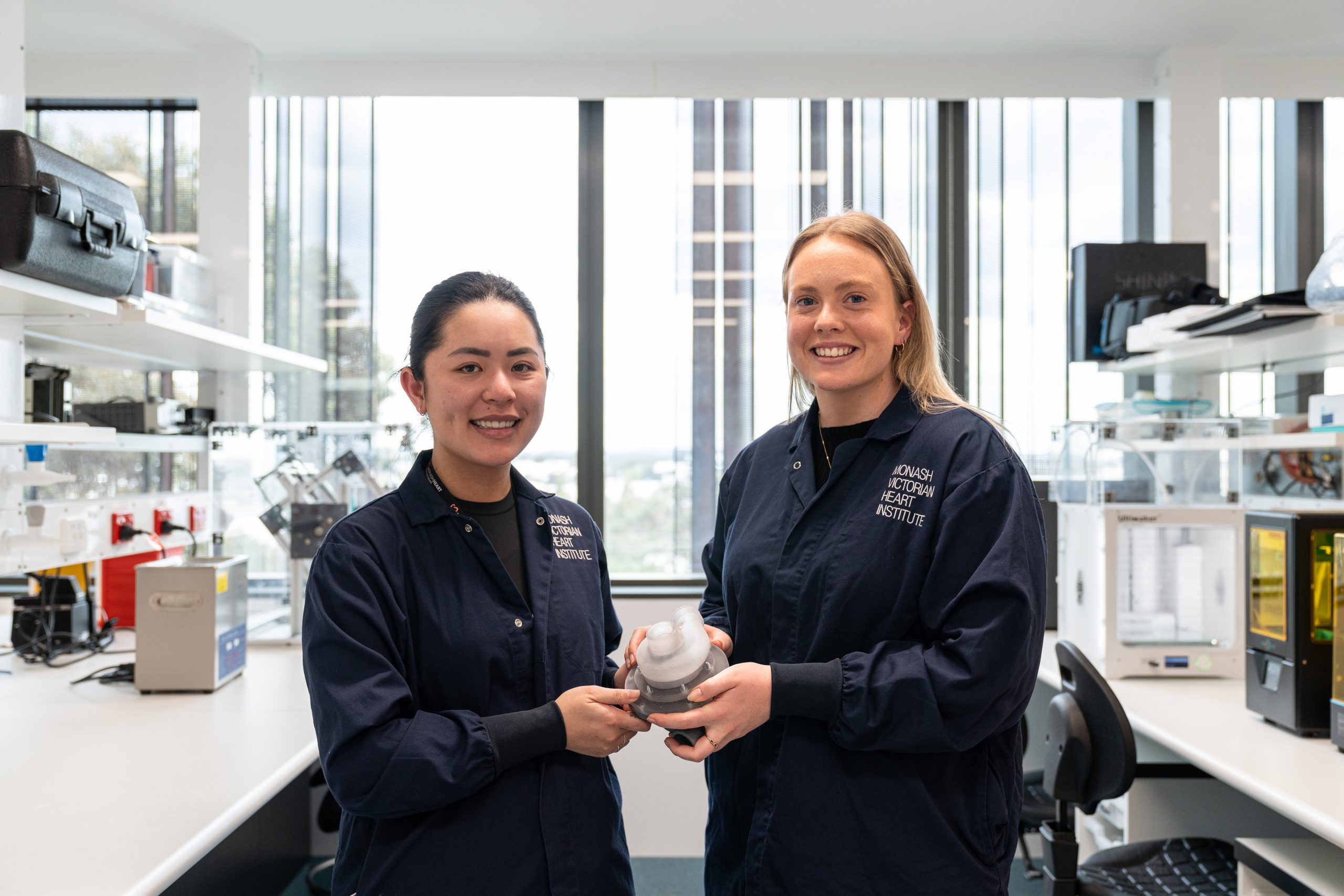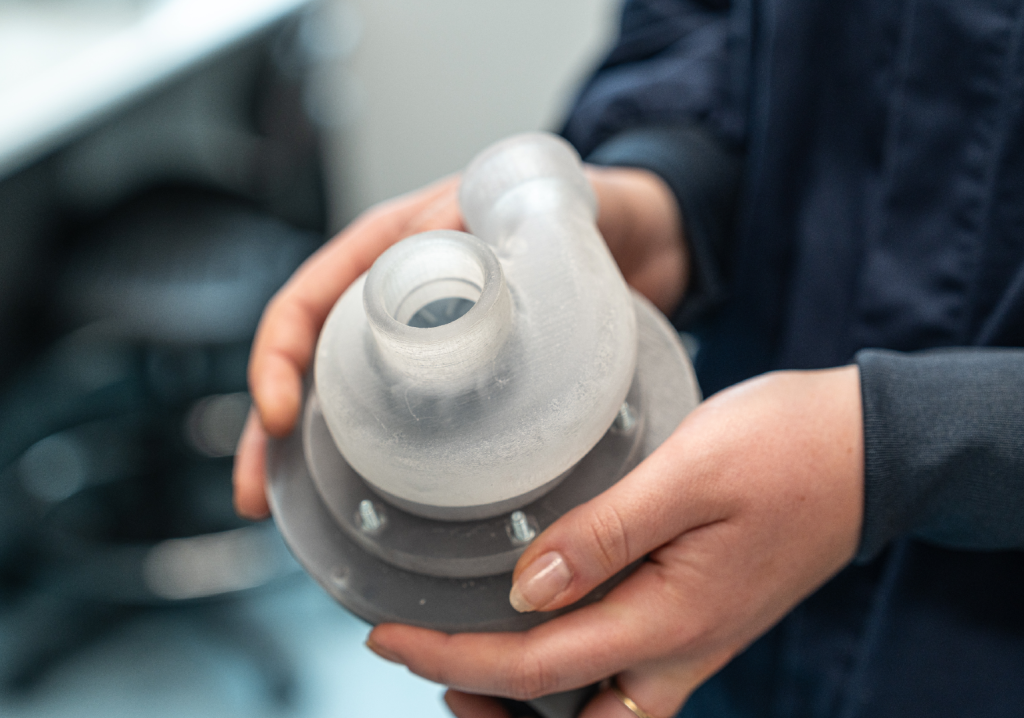Monash University students made a splash at the world’s first Heart Hackathon with their innovative total artificial heart design.
Julie Dao has personal reasons for wanting to come up with a solution to combat heart failure. The Monash University PhD candidate has a significant family history of heart disease, with her father recently receiving a stent from Monash Heart.
“My grandfather had a heart attack as well, along with some of my family members in Vietnam,” she said. “One of my relatives also died from a stroke, so there has been a chain over generations of people who have had heart diseases.”
Heart failure affects about 300,000 Australians, with more than 30,000 new diagnoses made every year.
“In Australia, one person dies from heart disease or heart failure every 12 minutes,” Dao added.
A 2019 estimation revealed that there are over 100 people currently on the heart transplant waitlist in Australia.
While not everyone meets the criteria for a human heart transplant, Dao, a biomedical sciences graduate, partnered with a team of Monash student engineers to design and build a total artificial heart (TAH) from scratch to improve their chances.

Together with Georgia Brooks, who just finished a combined mechanical engineering and biomedical science degree, Dao submitted the TAH to the Heart Hackathon — the world’s first student-led biomedical engineering competition — in Dallas Texas.
Brooks presented the Monash TAH in the competition on 29 October, with the team’s design placing second out of nine groups.
The pair sat down with create to discuss the Monash Heart Hack team’s TAH concept, what sets their device apart, and their plans for making a dent in the market in the future.
A modular design
When designing their TAH, Dao and Brooks were aiming for a novel solution that was both durable and human compatible.
“A TAH is essentially a pump,” Dao said. “To ensure human compatibility, we needed to design something that could interact with blood in an efficient way without shearing or cutting red blood cells.”
Key innovations in the team’s design include: an impeller — the rotating part of a centrifugal pump to move fluid — with backward spinning blades to reduce shear stress; a brushless motor system using magnetic levitation (maglev) principles to generate motion; and a shaftless electrical system.
The modular design helps to overcome compatibility issues, while the maglev helps avoid wear and tear.
“The Maglev prevents contact between the impeller and stationary parts to reduce friction and mechanical stress that could lead to fatigue of the device over time — increasing durability,” Dao explained.
While use of current TAHs is limited by strict patient selection criteria, particularly the body size of the patient, the team’s modular design allows for production of components in various sizes, widening the number of patients eligible to receive an artificial heart.
Wearable sensors factored into the design, complete with an attached graphical user interface, that also allows patients to interact with the device.
“We want the patient to be able to see how the device works within their body, and demonstrate that to the clinician as well,” Dao added.
Taking a multi-disciplinary approach
When it comes to designing medical devices, a multidisciplinary approach combining different experiences can help to reach the best outcome.
For Dao and Brooks, this way of working was integral to their design from the start.
“We knew we needed industrial engineers to help design the device, mechanical engineers to help build what the device looks like on the inside and outside, electronic engineers to build the circuit which powers the device, and software engineers to build the application that demonstrates to patients and doctors how it works,” Dao said.
When the Monash Heart Hack team started considering taking the device to market, other levels of expertise were required.
“From there, we needed medical and biomedical scientist [sic] students to understand how the human body works and how our device will be human compatible,” Dao said. “We also needed law students to identify how to classify the device.”
The student team will continue to work on the next iterations of the TAH, along with fresh faces who will replace those graduating.
Classification of the device is still a work in progress.
“Given there’s one standout TAH device — by US-based medtech company SynCardia — dominating the market, we need to figure out how to compete,” Dao said.
“We knew we had the engineering down pat, but as we explored the competition, we knew we had to think bigger.”
Related article: The analysis tool making it easier to detect and treat heart disease.
Next steps
Brooks and Dao are hoping their passion for this niche technology will continue to rub off on other engineering students and researchers.
“As students, the biggest part we can play is spreading the word so more people are interested and enthusiastic towards the work we do,” Brooks said.
“If we bring in more engineers, lawyers and science students into the space, that means we can really progress the industry further.”
The team’s device is still in the preliminary stage, with testing to determine how efficiently it functions in the human system still under development.
“We need to attach it to a mock circulatory loop that mimics blood flow in a human system in patients with heart failure,” Dao said.
Another consideration is how to charge the device.
“We had big plans of designing a wireless charging device, but that will probably take the next year or so to put into action,” she said.
Dao plans to stay on as a student advisor to the Heart Hack team which will enter the competition again in 2024. The evolving Monash Heart Hack team will also enter the competition annually moving forward.
With the team only granted a year to design and build the TAH for the Heart Hackathon, not all their plans were able to come to fruition in time.
“Now, we’re going to double down on all the goals we set out for the team and put those processes in place for the next steps,” Dao added.
If the device is approved for use in Australia, Brooks anticipates it will “change the game”.
Other medtech companies such as SynCardia and Swedish-based Realheart are focused on approval and distribution of their products in their own locales, with future plans for a Monash Heart Hack team IP for the TAH.
“We are looking at Australian regulation, so we can focus on helping local patients and minimising transplant waitlist times,” she said.
“Many Australians on the heart transplant waitlist or at the endpoint of heart failure don’t have a high quality of life. We want to be able to change that landscape for them and give them another option.”
A wonderful acknowledgement
Kelly Coverdale, Chair of the Biomedical College at Engineers Australia, applauded the team for their work, highlighting the strength of Australia’s biomedical engineering sector. She says that keeping these talented students in the engineering workforce is crucial.
“Overseas awareness and attraction to our home-grown innovations is a wonderful acknowledgement of Australian talent, but we would love to see an improvement in retention capability, supporting growth of our national biomedical ecosystem,” Coverdale said.
